Summary of Lawren Stewart Harris
Harris is one of Canada's most important and influential landscape artists. Infusing his paintings with a deep sense of spirituality, he emerged as a principal figure in the formation of the Group of Seven, a movement that brought the northern Canadian landscape to the attention of the international artworld for the first time. Harris's painting style passed through three phases: from an Impressionistic, picturesque, style, through stark, elegantly minimalist, compositions, to a purely abstract art. But it is for the middle phase of his career that he remains most celebrated. These evocative scenes of isolated peaks, and vast expanses of land, water, and sky, are today considered some of the most important images in twentieth-century Canadian art. Harris was a true patriot, and even a scandalous love affair that saw him exiled in America has not distracted from his contribution to Canada's cultural identity.
Accomplishments
- As leader of the Group of Seven (sometimes referred to as the Algonquin School), Harris helped establish Canada's first internationally recognized modern art group. They were united in the belief that a distinct Canadian art could be developed through direct contact with the country's vast and unique wilderness. For his part, Harris's art expressed his deeply-held spiritual values through minimalist images that caught something of the pull between the heavens and the earth.
- Though one can trace the influences of Impressionism, Post-Impressionism, Naturalism and Art Nouveau in his paintings, stylistically Harris commitment to creating a unique modern and credible national school saw him lean more towards an idealized minimalist style. His scenes of cold and barren northern wilderness, rendered through clear light and crisp shadows, created what are for many Canadians essential images of their country.
- While studying in Germany, Harris became interested in the philosophy of Theosophy, a mystical branch of religious belief that saw artists as more spiritually developed that ordinary mortals. Harris saw it as his mission to communicate his spiritual superiority to the world through his art. Speaking after seeing his landscapes in 1927, fellow Canadian artist, Emily Carr, declared, "There is a holiness about them. Something you can't describe but just feel".
- Towards the end of his career, Harris had moved progressively towards what he called a "non-objective" (abstract) art. As co-founder of New Mexico's, Transcendental Painting Group, Harris's abstract art drew on the rhythms of nature and his belief in Theosophy. Canadian art historian Joan Murray states that with abstract canvases such as, Abstract Painting No. 20 (1942), Harris portrayed "a binding and healing conception of the universe [that] makes him unique among Canadian painters".
The Life of Lawren Stewart Harris
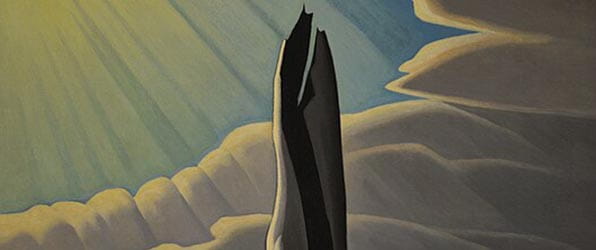
Art critic Jason McBride writes, Harris "despised the conservative Canadian artists who slavishly imitated European styles 50-odd years out of date. He wanted to be the Canadian Van Gogh - and if that was going to happen, he had to render a legitimate Canadian identity, whatever that may be. Or, better yet, create one himself".
Important Art by Lawren Stewart Harris
Top of the Hill, Spadina Avenue
As the title reflects, in this painting, rendered in monotonous shades of brown and gray, Harris depicts two small, ragged houses at the top of a hill on Spadina Avenue, on the border of a district known as The Ward, in Toronto. According to King, "the direct social commentary of this image [...] is reinforced by the title because most of the Spadina hilltop was occupied by the homes of the fabulously rich. Also, Harris goes out of his way to show the outbuilding and almost fortress - like structure of the building in the foreground. He is inscribing a glaring, sobering reality: there, at the top of Spadina Avenue, are the grandiose, splendiferous mansions of the rich, and there are also the shabby dwellings of the poor".
This work was painted shortly after Harris's return from his studies in Germany and before he turned his attentions completely towards the Canadian wilderness. His goal was to capture scenes of his beloved Canada, but without shying away from the paradoxes of modern urban life. Art critic Jason McBride writes, "The Ward was home to waves of newcomers - Jewish, Italian, Irish and Chinese - who crowded into its rundown rooming houses and sweatshops. In protestant Toronto [for someone of Harris's background] it possessed an electric exoticism and danger. Harris, governed by a mix of curiosity and noblesse oblige, was one of a few artists to venture there. He found poetry in its poverty - literally. The Ward's squalor inspired his first and only book of free verse, as well as a suite of paintings".
Oil on canvas - University of Toronto Art Collection, Toronto, Canada
Winter Woods
This early work is one of a series of snow paintings that Harris created between 1914 and 1918. Typical of this series, Harris presents a cluster of trees, heavily weighed down by snow, causing the evergreen branches to weep and merge into the snow on the ground. Despite the cold, the sky is a light blue establishing for the viewer that it is early in the day.
Harris was inspired to create snowy landscapes following a sketching trip through the Canadian north, and after attending an exhibition of winter landscapes in Buffalo, New York that featured the paintings of Scandinavian portrait artist, Gustav Fjaestad. King describes how Harris, "...located in the Swede's winter scenes a kind of visual paradigm that allowed him his first distinct glimpse into a way of creating a Canadian landscape tradition. The resulting images are worked on sharply focused receding planes, with photograph-like illusionism, tranquil hues of pink, mauve and pale blue, and curving, flowing lines from art nouveau, as well as precise, controlled brush strokes". Winter woods was amongst the first examples of pure landscape painting Harris created since returning from Europe. Gone were the houses, figures, and commentaries about the plight of the poor, that had dominated his earlier urban paintings.
Oil on canvas - Art Gallery of Ontario, Toronto, Canada
Waterfall, Agawa Canyon, Algoma
This work is one of a series of Algoma landscapes which Harris painted after a sketching trip he undertook in an attempt to get over the depression and grief brough on by the accidental death of his dear friend, artist Tom Thomson, and the loss of his brother, Howard, who was killed in action during World War One. Almost inconsolable, Harris found that only nature could bring him back to some semblance of his former self. Still, he had been irrevocably changed and that change manifested itself on the canvas in the way that he moved from more realistic works to works with simpler forms and looser, broader, brushwork. As King explained, "here was a man who had suffered two tremendous losses and who was attempting to rebuild and refortify himself. Harris had obviously begun to see the world differently, and that alteration can be witnessed in the new canvases".
Here a falling flow of white capped water pours over a cluster of rocks into a natural basin. Behind the rocks we see a lush forest rendered in a variety of shades of green. The work marks a maturity of his painting style and the start of a steady move towards more abstracted renderings of the wilderness. It was a modernist attitude that touched the hearts of an artist collective he brought together a year later which he called the "Group of Seven". There was, however, considerable early resistance to the group in the Canadian press. As art critic Jason McBride describes, "The work they produced was [considered] visceral, vivid and controversial.". One critic accused the group of having "an absolute lack of the knowledge of drawing, colour and design", while the Toronto Daily Star called them the "Hot Mush School" and referred to their collective works as "a gargle or glob of porridge".
Oil on paperboard - Art Gallery of Ontario, Toronto, Canada
Above Lake Superior
Powerful in its simplicity, this work features a cluster of barren dying trees in the foreground anchored in a bed of snow. Behind the trees lies a mountain range rendered in deep shades of blue against a cloud-lined sky. The painting represents the powerful influence that his trip to Lake Superior had on the future direction of his art. His landscapes we becoming noticeably more abstract and simplified in form, while his color palette had been reduced to muted grays, browns, and blues. It was a marked difference from the vibrancy of colors in many of the fellow members of his Group of Seven artists.
Harris's spirituality was entwined in his art is alluded to here with the emptiness of the landscape seeming somehow otherworldly. By this point in his career, Harris had suffered the loss of his father, grandfather, a good friend (Tom Thomson), and, most recently, his brother (Howard). The barren trees serve as visual metaphor for the loneliness he was struggling with at this point in his life. Still, there is hope in this painting. According to King, "the light in Above Lake Superior is diffuse and perfectly complements the deep pictorial space that is established. There is great regularity in the simple shape of the mountain and the vertical clouds that drift against the sky. The trees may have died, but they have achieved new life as pieces of sculpture. [...] Part of the picture's power emanates from the drama being established between the trees, almost as if the viewer is looking at a stage set - a common feature in Harris's work - just as a performance is about to begin. The trees can be said to be characters interacting in some mysterious way with each other. Part of this canvas's power derives from the fact that these relationships are most precisely defined".
Oil on canvas - Collection of Art Gallery of Ontario, Toronto, Canada
Isolation Peak
Minimalist in its rendering, Isolation Peak is one of several created by Harris during expeditions to the Rocky Mountains. It features a long mountain with a sharp triangular point jetting into a darkened sky. The only light is reflecting off the snow blanketing the sheer face of the mountain.
This work possess an almost hallowed quality. According to King, with this work, "... Harris is suggesting that such mountains are both sacred and occult, but he is also implying that man sometimes has a great deal of difficulty in knowing how to integrate his experience with these places of intense spiritual energy. [...] Harris once revealed to a painter friend one of the principal reasons he was drawn to mountains: '[They] don't want man. They're resisting man. They're pushing man away ... I just warn you about that, because you feel the antagonism of the mountains towards man, because they're afraid what man might do to the mountains.' [...] In some ways, painting mountains became for Harris a way of returning to the essential underlying forces governing the world".
While he worked primarily with the theme of landscape, there was a strong autobiographical aspect to many of Harris's works and this was rendered at a time when he was becoming more absorbed by his belief in the doctrines Theosophy. Although dismissed by him as little more than "Hinduism for Dummies", McBride (an admirer of Harris, incidentally) notes that "For avant-garde artists like Kandinsky, Duchamp and Mondrian, the Kool-Aid [religion] was particularly intoxicating: it endowed them with a supernatural power. Theosophists believed that artists had gone through several reincarnations to become more spiritually evolved. Attuned to a higher reality, they could communicate their enlightenment to the rest of the world, and if their visions were too original, too experimental, too vanguard, it's only because the rest of society wasn't as evolved as they were". As if confirming McBride's judgement, Harris said of his painting, "if we view a great mountain soaring into the sky, it may excite us, evoke an uplifted feeling within us. There is an interplay of something we see outside of us with our inner response. The artist takes that response and its feelings and shapes it on canvas with paint so that when finished it contains the experience".
Oil on canvas - University of Toronto Art Collection, Toronto, Canada
Abstract Painting No. 20 Circa
In describing this abstract work, the National Gallery of Canada describes how it "marks a shift away from the more rigidly geometrical compositions of the late 1930s. While the central white vertical bar and arching, semi-circular line recall the composition of [some of his earlier works]. Harris re-introduces more fluid, irregular lines in the background elements. [...] The inward angling of the three dark forms at the bottom of the work suggests movement backwards into receding space, which is emphasized by the strong vertical lines that rise up and bracket each side".
This work is representative of the last phase in Harris's career in which he produced fully abstract works. However, the argument can be made that the Canadian landscape was such a part of his lived and spiritual life it might still be present here in spirit. According to King, "the simple fact was that Harris could try to escape landscape, but he remained in its thrall. He may no longer have wanted to be a representational artist, but that calling was an intrinsic part of his makeup. [This painting] began as an experiment looking at the complexities of wood grain. From what were supposed to be blow-ups of such observations he produced [this work]". For Harris, abstraction was the logical step in the progression of his career. He said, "abstraction seems the best way for me. I have done quite a number of things and with each one learn a little more or increase that particular way of perceiving. Feeling can be as deep, as human, as spiritual, or resonant in an abstraction as in representational work".
Oil on canvas - National Gallery of Canada, Ottawa, Canada
Biography of Lawren Stewart Harris
Childhood and Education
Lawren Stewart Harris was the eldest of two sons born to Thomas Morgan Harris, and Annabelle Stewart, a minister's daughter (his unusual Christian name was arrived at via a compromise: his mother had wanted to call him Lawrence; his father preferred Lorne). The couple managed his paternal grandfather's, Alanson Harris, successful farm machinery manufacturing business (A. Harris, Son and Co.). In 1891 the company merged with the rival farm machinery company, Massey Manufacturing. Massey-Harris, as they became then known, were the largest agricultural firm in the British Empire. The amalgamation made the Harrises very wealthy.
Art critic Jason McBride writes, "The only thing more important to the Harrises than money was religion. [The] Harris dynasty poured its cash into the church: Alanson bankrolled several Baptist churches in southern Ontario, and Tom was a deacon of the Baptist Young People's Union in Ontario. He and Annie ran a strict, if loving, household. Card-playing was forbidden; morning and evening prayer mandatory; church attended three times every Sunday, when the only reading material permitted was the Bible." McBride adds "A sickly child often confined to bed with a mysterious heart defect, Lawren spent his time sketching his toys or making Christmas cards. He wanted to play hockey and swim in the river, but Annie nudged him toward knitting and stamp collecting instead".
Early Training
When Harris was only nine years old, his father died from kidney failure. His grief was compounded a few weeks later when grandfather Alanson passed. His mother moved the family to The Annex, a neighborhood in downtown Toronto, to be close to her parents. Harris attended St. Andrew's College, a brand new private school, before enrolling at the University of Toronto in 1903. He became quickly bored with the curriculum. The only subject that grabbed his interest was artmaking. The idle sketches he made of his classmates in his notebook during math would prove somewhat fortuitous. His math professor discovered his book and, somewhat unexpectedly, visited Harris's mother who he convinced of her son's talent and advised that he change focus. She arranged for him to travel with her younger brother to Berlin (where she had relatives) in early 1905 where he formally commenced his art training.
![Helena Blavatsky (1877). McBride described the co-creator of Theosophy, as “a foul-mouthed fabulist, huckster and high priestess [...] perpetually enveloped in tobacco smoke”.](/images20/photo/photo_harris_lawren_1.jpg)
Harris became heavily influenced by the German Secessionism style of painting and the work of its' leader Max Liebermann. Of his time in Germany Harris later stated, "I went to the older parts of the city along the River Spree and painted houses, buildings, etc. - small water colours. [I] also went the rounds of the public and dealers' galleries. My whole conditioning was academic". In 1907, he met the artist and writer Paul Thiem. The German introduced Harris to Theosophy, a cultish teaching led by the Russo-German, Helena Blavatsky, a New-Age occultist who claimed that a world based on her mystical, quasi-religious insights promised a fuller human existence through the "training of the soul". Harris (who promptly gave up drinking, smoking, and his Christian faith) stated, "Theosophy is not soporific like an ordinary religion - it excites all sorts of things, unknown and untoward things". Harris joined Toronto's Theosophical Society where he gave lectures on art, and published articles on Theosophy and art in the Canadian Theosophist magazine.
Mature Period
Harris returned home to Canada in 1908. He began to focus on urban landscapes but did so in a way that distinguished him from others painting in a style that tackled the theme of social injustice. According to King, he rendered his landscapes with, "...an added complexity: he chose at the outset of his career to try to establish himself as a landscape artist at the very same time he was depicting the plight of the underclass. This was an ambitious project, demonstrating that he had both a social conscience and a nationalistic agenda. This dual purpose was unusual at the time". These early career paintings, which he worked on for the next decade, often featured the streets and houses of Toronto neighborhoods.
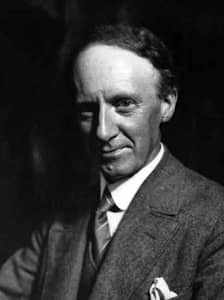
In 1909 Harris's career reached a major turning point when he joined the Arts and Letters Club, an elite group dedicated to the support of all forms of arts in Toronto. It was at the Club, already attended by the likes of architect Eden Smith, novelist and playwright, Robertson Davies, and philosopher and media theoretician, Marshall McLuhan, that he first met J. E. H. MacDonald, with whom he bonded over art and their shared interest in Theosophy. MacDonald's style made an immediate impression on Harris who later recalled, "there was an exhibition of his sketches on the walls of the club: sketches of scenes painted in the vicinity of his home which was on the outskirts of the city. These sketches contained intimations of something new in painting in Canada, an indefinable spirit which seemed to express the country more clearly than any painting I had yet seen. I was deeply moved. Here, it seemed to me, was the beginning of what I myself vaguely felt: what I was groping toward - Canada painted in her own spirit. These sketches of MacDonald's affected me more than any painting I had ever seen in Europe. MacDonald and I became close friends". It was a meeting of minds that helped sow the seeds for a new Canadian art movement that would become known as The Group of Seven.
Harris was a regular guest attendee at Spadina, a luxurious estate situated in the district of Davenport Hill. Spadina was a hub for Toronto high-society with guests including the Archbishop of Canterbury and the financier, J. P. Morgan. It was at a Spadina garden party that Harris met his future wife, Beatrice "Trixie" Phillips, the daughter of millionaire fine china merchant. They were married in 1910. McBride writes, Over the next 20-odd years, the couple distracted themselves from their incompatibility by moving several times - from an Eden Smith-designed Arts and Crafts house on Clarendon Avenue to a dark Gothic revival home down the street from the Ontario legislature and finally, at the height of the Depression, to an immense, custom-built, modernist mansion in Forest Hill. They had three children - Lawren Jr., Margaret and Howard - and Harris indulged them the way his mother had indulged him. In a memoir called 'Personal Reminiscences,' Margaret recalled, 'He rarely said 'No,' so we had full scope to try just about anything'".
Harris's efforts to better the lives of others extended beyond his art and more directly to artists themselves as Harris, with doctor and art collector James MacCallum, purchased a building which they converted into a network of studios that bought into their worldview. McBride writes, "...dubbed the Studio Building for Canadian Art [it] provided workspace and living quarters for six artists. [...] Harris designated its spaces reserved 'for artists doing distinctly Canadian work'". Indeed, Harris was very vocal in his advocacy for a distinctively Canadian art. In June of 1914 Harris wrote an editorial in the Toronto newspaper, attacking the National Gallery for its focus on European modernism over domestic art and artists.
Inspired by MacDonald's work, Harris committed to representing the natural beauty of the Canadian landscape. The pair undertook sketching trips to the Canadian countryside. The two artists also drew inspiration from an exhibition of Scandinavian winter paintings at the Albright Gallery in Buffalo, New York. They especially admired the way that the Scandinavian artists Gustaf Fjaestad and Vilhelm Hammershøi had managed to convey their personal feelings towards their natural surroundings through their art. Of the exhibition, Harris stated, "[it] turned out to be one of the most stimulating and rewarding experiences either of us had had. Here were a large number of paintings which gave body to our rather nebulous ideas. Here were paintings of northern lands created in the spirit of those lands. Here was a landscape as seen through the eyes, felt in the hearts, and understood by the minds of people who knew and loved it". Indeed, Harris was so taken with the Scandinavian paintings that it led to four years of intense focus on landscape paintings featuring snow.
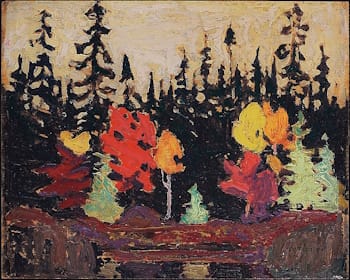
Harris's painting career was interrupted by the outbreak of World War One. He enlisted in 1916 and began his service as a musketry instruction officer. Although Harris never served in Europe, (he had a heart condition that debarred him from any combat role) and could still find time to paint, his painting came to an abrupt halt with the double tragedy of the death in 1917 of his dear friend, and fellow artist Tom Thomson who had drowned in Canoe Lake in Algonquin Park (the cause of death - misadventure, murder or suicide - was never solved). He lost his beloved brother, Howard, on the battlefields of Europe a year later. Harris was so consumed with grief he suffered a nervous breakdown (brought on in part by a serious sleep disorder) and was discharged from the army on medical grounds.
It was his art that set Harris on his road to recovery. Although convinced he would never be a great painter (in a letter to MacDonald he wrote, "At times I impress myself as having built everything...on sand"), Harris undertook several trips into the spectacular Algoma countryside (north of Ontario) which yielded a new series of paintings defined by more vivid colors and looser brushwork. Of this period King states, "consciously, Harris may have been well aware that he had to separate himself in some way from the elegant winter pictures in order to enter a potentially more chaotic terrain, one in which he would be pursuing new leads and thus become more vulnerable". In this way, perhaps, his art mirrored his own state of mind.
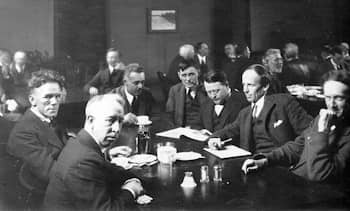
In early 1920, a group of Canadian artists gathered at Harris's house. Under Harris's de-facto leadership, they became the movement known as the "Group of Seven". The Group would in fact feature a total of eleven artists (or twelve if one includes Emily Carr who made no secret of her artistic debt to the group) before its end in 1933. The original seven were: Harris, MacDonald, Franklin Carmichael, A.Y. Jackson, Frank Johnston, Arthur Lismer and Frederick Varley. The group also collectively acknowledged the input of Thomson (who, had he lived, would have likely seen the movement named the "Group of Eight"). The Group of Seven harnessed a new patriotic spirit amongst Canadians, and in so doing, helped vanquish the prevailing attitude that all things European were culturally superior to their North American imitators. The Group of Seven held their first exhibition, to great critical acclaim, at the Art Gallery of Toronto later in the year. For his part, Harris exhibited a collection of his landscapes, a few of his ward paintings, and four portraits, one of which was of artist, Bess Housser. Bess the wife of Harris's old friend, Frederick Housser, a financier and journalist, and fellow Theosophist. Bess Housser and Harris shared a clandestine friendship in which they regularly "exchanged letters".
McBride writes, "The Group of Seven always looked less like insurgents than insurance salesmen. While they fancied themselves masters of the Canadian wilderness, they were, for the most part, cosmopolitan urbanites, animated by anger toward what they considered retrograde Canadian art. [...] If the romantic story of modern art is the story of artists breaking free, century by century, from the royal court, the aristocracy and then, finally, the bourgeoisie, here were a bunch of artists who were happily bourgeois. They held steady jobs, had families, went to church. The Group's art might have seemed subversive, they might have shocked this tiny burg of burghers - at least for a little while - but it was in the service of a strenuously worthy aspiration: nation-building".
Later Period
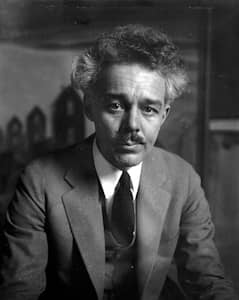
With the Group of Seven's reputation in the ascendancy, Jackson commented that, "the Algoma country [had become] too opulent for Harris [and] he wanted something bare and stark". Harris and Jackson duly embarked on a sketching trip northbound towards the shore of Lake Superior. Overwhelmed and inspired by the raw majesty of Canada's natural environment, Harris's paintings turned more abstract, with simpler, more minimalist shapes, looser brushstrokes, and a more muted color palette (dominated by blues, grays, greens, and browns). His new approach was made visible in future series including those produced following treks to remote mountain ranges and the country's arctic wilderness. He painted versions of Lake Superior every year between 1921 and 1928, and these works are often described as the most remarkable of his career. Harris stated, "Visible nature is but a distorted reflection of a more perfect world and the creative individual viewing her is inspired to perceive within and behind her many garments that which is timeless and entirely beautiful".
Foremost among the significant Canadian artists to be influenced by the group was Emily Carr. On her way to Ottawa for the 1927 exhibition, Canadian West Coast Art: Native and Modern - in which she showed 26 of her works - she met Harris and other members of the group. Her response to the exhibition was, "Oh, God! What have I seen? Where have I been? Something has spoken to the very soul of me, wonderful, mighty, not of this world, Chords way down in my being have been touched".
After fourteen years and eight group exhibitions, the Group of Seven had ran it course. As author Maanasi Baa writes, "they believed they had finally gotten through to the Canadian people. [...] JEH MacDonald died in 1932. A year later, the Group of Seven was dissolved to make way for the Canadian Group of Painters (CGP). The new group included artists from all over Canada, not just Toronto". Harris remained a key force behind Canadian art by serving as the CGP's president with many of the group moving towards pure abstraction.
While Harris may have felt contentment in his professional goals, his personal life was about to descend into emotional disarray. In 1934 Bess Housser discovered that her husband was having an affair and sought solace in the arms of Harris. She got a "quicky" divorce in Reno (divorce was not legally binding in Canada at that time) and moved into the studio block. Although Harris and Housser insisted that their love was purely spiritual and intellectual, Trixie divorced Harris, also in Reno. Trixie and her family then threatened to bring charges against Harris for bigamy. The affair alienated many of Harris's friends (including Carr and Jackson) and caused a scandal in the tabloid press. The pair left Toronto for New Hampshire (America) where they stayed with an uncle of Harris's for a short period.
Seeking a warmer climate for the winter, Harris and Housser moved to New Mexico. To their surprise, they fell in love with the desert landscape. Here they met artist Raymond Jonson who invited Harris to become part of his new Transcendental Painting Group. Harris began to produce his first truly abstract works; works that were in fact devoid of any naturalistic representations of the landscapes. Commenting on this point in his career, author Joan Murray states, "Harris became an abstract artist in 1934 because he found such an art - which did not depict recognizable scenes or objects - full of great and enticing possibilities; and he found exciting the lack of predictable direction to his work".
While the pair might well have settled in America for the rest of their lives, fate brought them back to Canada when World War Two broke out and Harris's mother became seriously ill. Now living in Vancouver, he volunteered to serve as a civil warden in the war effort while caring for his ailing mother. Harris would continue to paint in his abstract style. He suffered an aneurism in 1958, followed by a heart attack in 1964. By the time Housser died in September 1969, Harris was suffering from dementia and could only paint with help of his daughter, Peggie. Harris died four months after his wife, aged eighty-four. He was made a Companion of the Order of Canada soon after.
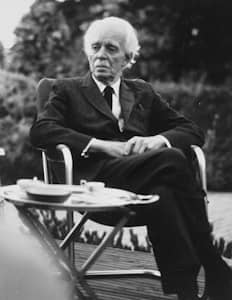
While he was the first living Canadian to be given a solo retrospective at the Art Gallery of Toronto in 1948, it was for his role within the Group of Seven that Harris remains best remembered. McBride concludes, "During Harris's lifetime, the Group [of Seven] was fêted and fawned and fought over. They became the subject of dozens of reverential coffee table books, biographies, documentaries, novels, postage stamps, calendars and coffee mugs. By the turn of the 20th century, their work was fetching millions at auction, and Harris had become one of Canada's most collected artists. [In November 2016] his painting "Mountain and Glacier" sold to an anonymous buyer for $4.6 million at a Heffel auction - the highest auction price ever for a Canadian painting".
The Legacy of Lawren Stewart Harris
As the guiding force behind the Group of Seven, Harris was instrumental in developing a style of art that brought Canada to the attention of the international artworld. As his fellow group member A.Y. Jackson observed, "[Harris] provided the stimulus; it was he who encouraged us always to take the bolder course, to find new trails". Ian A.C. Dejardin, Executive Director of the McMichael Canadian Art Collection added that "The Group of Seven not only translated what they saw into a vivid visual language of their own, but through that language they taught us to appreciate the natural beauty of Canada in all its vast scale and variety. Many Canadians continue to see the country through the Group's eyes". A 1995 National Gallery exhibition titled, The Group of Seven: Art for a Nation, also espoused the view that the Group of Seven offered "an essential Canadian identity".
Later in his career, even as Harris embraced full abstraction, he continued to exert an influence over the progression of Canadian art. Harris's style inspired other Canadian artists, most notably perhaps, Emily Carr, who embraced Harris's move towards abstraction in her own renderings of the Canadian landscape. Later generations were also influenced by Harris's art, including Graham Coughtry, Gordon Rayner, and Arnold Shives, and the abstract Painters Eleven group which was founded in 1953 and whose name was decided upon as an homage the Group of Seven. Historian James King concludes, "in addition to his paintings and sketches, Harris bestowed upon Canadians another legacy. He constantly reminded them - even when they tried to keep their eyes and ears closed - that Canada has its own distinct culture that must be preserved".
Influences and Connections

-
![Caspar David Friedrich]() Caspar David Friedrich
Caspar David Friedrich -
![Max Liebermann]() Max Liebermann
Max Liebermann -
![Vincent van Gogh]() Vincent van Gogh
Vincent van Gogh - Gustav Fjaestad
- Tom Thomson
- Paul Thiem
- Eric Brown
- Barker Fairley
- James MacCallum
- Sir Edmund Walker
-
![Emily Carr]() Emily Carr
Emily Carr - Graham Coughtry
- Gordon Rayner
- Arnold Shives
- Paul Thiem
- Eric Brown
- Barker Fairley
- James MacCallum
- Sir Edmund Walker
-
![Abstract Expressionism]() Abstract Expressionism
Abstract Expressionism -
![Group of Seven]() Group of Seven
Group of Seven -
![Modernism and Modern Art]() Modernism and Modern Art
Modernism and Modern Art - Painters Eleven
Useful Resources on Lawren Stewart Harris
- Inward Journey: The Life of Lawren HarrisOur PickBy James King
- Lawren Harris: An Introduction To His Life and ArtOur PickBy Joan Murray
 Ask The Art Story AI
Ask The Art Story AI

















